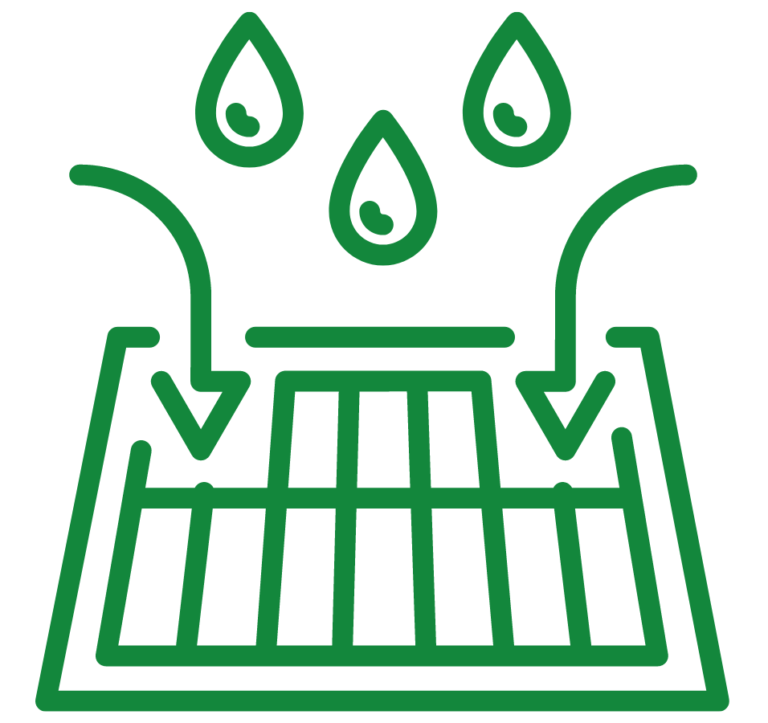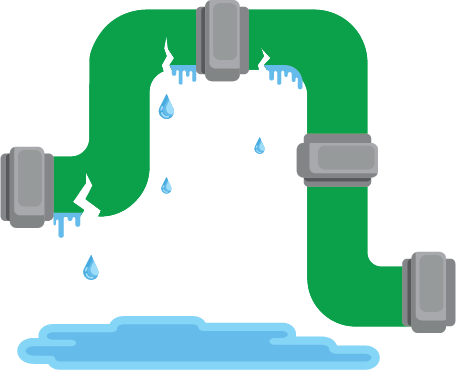SuDs
Why are we talking about SuDs?
Sustainable Drainage Systems (SuDS) manage water to avoid flooding. There are other benefits as well but as we see increased heavy rainfall and sewage overflows into rivers and the sea, the water sector is investing £billions in the development of SuDS across London and the UK. This is a massive injection of money into the green space sector – so we need to be ready for it and build and manage SuDS well. This will quickly become standard land management.
Click on the button below to watch the Intro to SuDs Hub session or read on to get started on upskilling on SuDS!

What are SuDs?
Welcome to Sustainable Drainage Systems (SuDS); where green space becomes a natural solution for managing water drainage. With SuDS, we not only address local flood risk and water quality, but we also create opportunities for biodiversity and enhance the beauty of new and existing developments.
In contrast to traditional drainage systems, such as underground pipes that swiftly whisk rainwater away from urban areas, SuDS offer a more sustainable and effective approach. By incorporating features like rain gardens, swales, and green roofs, we can not only mitigate flood risk but also promote biodiversity, provide wildlife habitats, and establish sustainable ecosystems within the designed landscape.
It’s important to note that surface flood management is rapidly becoming a top priority in London, particularly as we witness increased flood events here and in other urban areas. As a result, the building and maintenance of SuDS will soon become a commonplace requirement in the green space sector.
If you’re new to SuDS, we recommend starting with this helpful 3 min video, Where the rain goes. This is a great introduction to the concept and its benefits.
Now, let’s explore how SuDS will impact you and the work you do.
How does this affect contractors and local authorities?
Sustainable Drainage Systems (SuDS) are undergoing remarkable growth, driven by the government’s search for effective solutions to address urban water management challenges like flooding and water pollution.
SuDS are required in all new major developments and awareness by practitioners and regulators and their implementation is steadily increasing. As sustainable development and environmental protection gain more prominence, greater funding is being allocated to support the integration of SuDS. This funding acknowledges the potential for enhancing water resilience, biodiversity, and the creation of greener, more livable communities.
Huge sums of money are being pledged to SuDS with Thames Water alone planning to invest £1bn by the end of this decade. They are projecting 1500 new rain gardens annually by 2030 and a staggering 17,500 per year by 2050. Building and maintaining these sites will become standard in green space contracts so training staff and preparing for this investment now will create a competitive edge in applying for future funding or contracts.
SuDS basics - what you need to know
Traditional urban drainage systems pollute natural waterways, such as rivers and lakes, because they let dirty water flow directly into them. Untreated and polluted water can stem from sewer overflows, and runoff from impervious surfaces containing chemicals and waste among other places. Sustainable drainage systems, like SuDS, help prevent pollution and keep our valuable waterways clean.
Just a few benefits we can get from SuDS include:
- Managing surface water: SuDS aim to mimic natural drainage processes by managing surface water runoff close to its source. They include a range of features such as permeable surfaces, green roofs, rain gardens, detention ponds, and swales. These features help to slow down the flow of water, allowing it to seep into the ground or be stored and released gradually. By managing runoff on-site, SuDS reduce the burden on existing drainage infrastructure and help to mitigate flood risk.
- Flood risk reduction: Urban areas have an increasing risk of localised flooding – largely due to climate change causing more intense rainfall events – which traditional drainage systems can struggle to cope with. SuDS can help by storing excess water and incorporating SuDS into development projects will improve resilience against flooding.
- Water quality improvement: Surface water runoff often carries pollutants such as sediment, oil, chemicals, and litter, which can harm rivers, lakes, and groundwater. SuDS include features that promote filtration, retention, and treatment of runoff, allowing pollutants to be naturally filtered and removed before the water enters natural waterways. This helps protect water quality and the ecosystems that rely on it.
- Environmental benefits: SuDS offer numerous environmental benefits, such as enhancing biodiversity by creating habitats for plants and animals, and improving air quality by promoting vegetation and reducing surface water runoff. Additionally, SuDS can contribute to urban cooling by providing shade and the moisture that evaporates from plants helps to cool the air.
- Public perception and community benefits: SuDS are increasingly recognised as a more sustainable and environmentally friendly approach to managing surface water. Local communities and the public are often supportive of developments that incorporate SuDS as they can help create greener and more attractive environments. By embracing SuDS, contractors and local authorities can enhance their reputation and gain community support.
Getting the green space sector ready - training in SuDS
As a contractor, it is sensible to consider training staff in Sustainable Drainage Systems to prepare for the upcoming surge in demand. Contractors and local authorities can position themselves as leaders in environmentally responsible practices and be well-prepared to undertake future projects that prioritise water management and sustainability.
Ciria is a neutral, independent not-for-profit within the construction industry that provides training on SuDS. You will find well-respected foundational training, as well as design and evaluation courses within their training offer.
Training: See more of Ciria’s SuDS training options on offer
Resources: Find out more about SuDS from Susdrain’s available resources, including case studies, policies and other guidance.
Assessment of the benefits of blue and green infrastructure: https://ciria.best/
Glossary:
- Sustainable Drainage Systems (SuDS): A sustainable way to manage rainwater that mimics how nature does it.
- Rain gardens: Shallow depressions with plants that filter rainwater.
- Swales: Shallow, vegetated channels that slow down rainwater.
- Permeable surfaces: Surfaces that let water through, like porous paving or green roofs.
- Flood risk reduction: Making flooding less likely or less bad.
- Water quality improvement: Making water cleaner and healthier.

